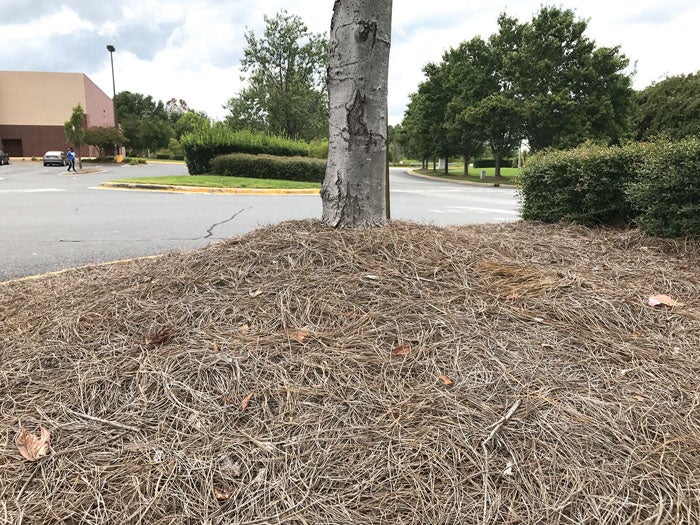Much ado about mulch
Published 12:00 am Friday, September 15, 2017

- Submitted photo Pine straw mulch is popular and effective in the South.
By Amy-Lynn Albertson
Rowan County Extension Director
As the weather has been cooler, everyone has headed out to their yards to get some work done.
Many people are putting out mulch. Mulch has lots of positive attributes — it discourages weeds, conserves moisture during drought and helps maintain a uniform soil temperature.
Mulch protects trees and shrubs from lawn equipment and reduces root competition from grass, which helps the trees and shrubs grow faster. On top of all that, mulch makes any planting look better.
As with planting, you need to make sure you have the right amount of mulch in the right place. Two to three inches of mulch is the ideal amount around trees and shrubs. More than four inches can reduce the amount of water reaching the soil beneath.
If mulch is too heavy, the roots can be deprived of oxygen, and it can reduce the soil’s ability to dry out. Thick layers of fine mulch can become matted and prevent the penetration of water and air, making the mulched area anaerobic or “sour.” This can give off odors.
Tree bark is meant to protect the trunk. It works best in the air and light. If you pile mulch onto the bark, it is now exposed to moisture and darkness. The bark will rot and not be able to protect the tree from insects and diseases.
One of my biggest pet peeves is mulch volcanoes. A mulch “volcano” is where mulch is piled up, and the plant looks like it is erupting out of a mulch mountain. Mulch should be applied evenly over the root system of your planting. For trees, this means mulch should be applied out to the drip line or edge of tree’s canopy.
Now you know how much mulch and where you apply the mulch. So what type of mulch is best? There are many types of organic mulches to choose from — the popular ones are hardwood bark mulch, pine bark or pine straw. Each type has its own set of advantages and it is up to you what you like best.
Pine straw is a favorite mulch in the South. It is easy to transport in bales and stays in place relatively well. Pine straw will not make your soil acidic, in fact, it has little impact on your soil pH at all. Pine needles tend to interlock and stay in place better than most mulches, especially on a slope. This mulch is lovely and allows air, water and nutrients to penetrate the soil surface.
Pine bark mulches are available in different sizes, such as nuggets or chips. The disadvantage to pine-bark mulches is they are loose and don’t hold as much moisture as other mulch types. Pine bark mulch will float when flooded, so they shouldn’t be used in areas where water flows. I found this out the hard way and ended up with mulch clogging my French drain trap.
Shredded pine bark mulch is easy to spread around delicate stems. In annual and vegetable beds it can be tilled into the soil at the end of the season as a soil amendment.
Hardwood bark mulches knit together tightly and stay in place even in areas that are windy or have flowing water. You can get hardwood mulch in a variety of colors: red, chocolate, gold, even Tennessee Volunteer Orange. These colors are achieved by the addition of iron-based dyes, so they are safe for your soil and your plants. Shredded mulches are good at suppressing weeds and they decompose slowly.
No matter what type of mulch you choose, remember you only need a two to three inch layer, and, please, no more mulch volcanoes.
For information about mulch or other horticultural topics, please contact the Rowan County Extension Center at 704-216-8970 or on the web at http://rowan.ces.ncsu.edu.





